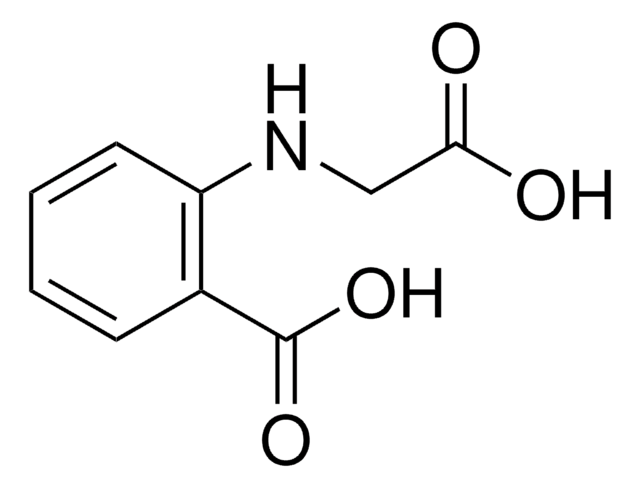V800150
Dibutyl phthalate
LR, ≥98%
Sinónimos:
n-Butyl phthalate, DBP, Phthalic acid dibutyl ester
About This Item
Productos recomendados
grado
LR
densidad de vapor
9.6 (vs air)
presión de vapor
1 mmHg ( 147 °C)
Línea del producto
Vetec™
Ensayo
≥98%
Formulario
liquid
temp. de autoignición
756 °F
lim. expl.
0.47 %, 236 °F
dilution
(for analytical testing)
índice de refracción
n20/D 1.492 (lit.)
pH
7 (20 °C, 10 mg/L)
bp
340 °C (lit.)
mp
−35 °C (lit.)
densidad
1.043 g/mL at 25 °C (lit.)
grupo funcional
ester
cadena SMILES
CCCCOC(=O)c1ccccc1C(=O)OCCCC
InChI
1S/C16H22O4/c1-3-5-11-19-15(17)13-9-7-8-10-14(13)16(18)20-12-6-4-2/h7-10H,3-6,11-12H2,1-2H3
Clave InChI
DOIRQSBPFJWKBE-UHFFFAOYSA-N
¿Está buscando productos similares? Visita Guía de comparación de productos
Aplicación
Información legal
Palabra de señalización
Danger
Frases de peligro
Consejos de prudencia
Clasificaciones de peligro
Aquatic Acute 1 - Aquatic Chronic 2 - Repr. 1B
Código de clase de almacenamiento
6.1C - Combustible acute toxic Cat.3 / toxic compounds or compounds which causing chronic effects
Clase de riesgo para el agua (WGK)
WGK 3
Punto de inflamabilidad (°F)
367.7 °F - open cup
Punto de inflamabilidad (°C)
186.5 °C - open cup
Elija entre una de las versiones más recientes:
Certificados de análisis (COA)
¿No ve la versión correcta?
Si necesita una versión concreta, puede buscar un certificado específico por el número de lote.
¿Ya tiene este producto?
Encuentre la documentación para los productos que ha comprado recientemente en la Biblioteca de documentos.
Active Filters
Nuestro equipo de científicos tiene experiencia en todas las áreas de investigación: Ciencias de la vida, Ciencia de los materiales, Síntesis química, Cromatografía, Analítica y muchas otras.
Póngase en contacto con el Servicio técnico









